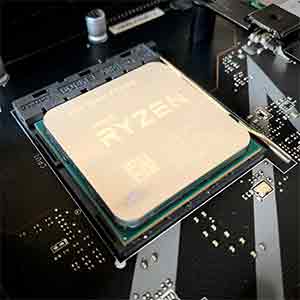# Unveiling the Future: The Latest Breakthroughs in State-of-the-Art Electronics
In an era where the pulse of innovation beats faster than ever, the domain of electronics is a dazzling showcase of human ingenuity. With each passing year, state-of-the-art electronics push the boundaries of what we thought possible, reshaping our daily lives, and painting a future that once existed only in the realms of science fiction.
As we stand on the cusp of tomorrow, let us embark on a journey through the latest breakthroughs that are defining the cutting edge of electronics technology. From quantum leaps to microscopic marvels, these advancements are not just refining our gadgets��they are revolutionizing our world.
Quantum Computing: Tapping into the Subatomic Symphony
At the forefront of technological marvels lies quantum computing. A field that turns traditional computing on its head by leveraging the peculiar principles of quantum mechanics. Unlike classical computers, which process bits in a binary fashion (0s and 1s), quantum computers use qubits that can exist in multiple states simultaneously, thanks to a phenomenon known as superposition.
The latest quantum processors have shown that they can solve problems that would take classical supercomputers millennia to crack. This has profound implications for cryptography, pharmaceutical research, and complex system modeling. Companies like IBM and Google are racing to scale up their quantum capabilities, with Google's Sycamore processor demonstrating quantum supremacy by performing a calculation in 200 seconds that would take a conventional supercomputer 10,000 years.
The Surge of 5G and Beyond
Connectivity is king in our interconnected world, and the rollout of 5G networks is akin to building new expressways in an already bustling city. With speeds up to 100 times faster than 4G, reduced latency, and massive data capacity, 5G is transforming how we interact with state-of-the-art electronics.
Beyond enhancing smartphone experiences, 5G paves the way for advances in autonomous vehicles, smart cities, and Internet of Things (IoT) devices. It's not just about faster streaming or more efficient communication; it's about creating a canvas where instantaneous data transfer becomes the norm. And as researchers already start to whisper about 6G technology, it's clear that this connectivity journey has only just begun.
AI Chips: Smarter Silicon on Your Fingertip
Artificial Intelligence (AI) has become an omnipresent force in modern electronics, influencing everything from your smartphone's camera to predictive text input. The latest breakthroughs involve AI chips��specialized processors designed to efficiently handle AI tasks directly on devices rather than relying on cloud-based computing.
These chips enable real-time processing with minimal latency and have started appearing in consumer electronics such as smartphones and smartwatches. The Apple A14 Bionic chip with its Neural Engine and Google's Tensor chip are prime examples of this trend towards localized intelligence, empowering devices to learn from user interaction and environment for more personalized experiences.
Flexible Electronics: Bending Reality to Our Will
Imagine rolling up your television like a yoga mat or wearing a wristband that doubles as a full-featured smartphone. This isn't far-fetched thanks to flexible electronics. Advances in materials science have given us organic light-emitting diode (OLED) displays that can be bent or folded without compromising performance.
Companies like Samsung and LG are already offering products with flexible screens, signaling a future where electronic devices conform to our needs and not vice versa. Moreover, researchers are experimenting with flexible batteries and circuits, further expanding the potential applications of this transformative technology.
Energy Harvesting: Powering Electronics Out of Thin Air
One of the most remarkable areas of development is energy harvesting��the ability to power electronics through ambient sources such as solar energy, thermal gradients, or even radio frequencies. Imagine smartwatches charged by body heat or IoT sensors powered by vibrations from machinery they monitor.
This field is gaining momentum as it promises to reduce reliance on traditional batteries and power grids, making electronic devices more sustainable and autonomous. Innovations like photovoltaic fibers woven into fabric or piezoelectric materials embedded in roads could open up new horizons for both wearable tech and urban design.
Graphene: The Wonder Material Revolutionizing Electronics
No discussion on state-of-the-art electronics would be complete without mentioning graphene. This one-atom-thick layer of carbon atoms arranged in a hexagonal lattice boasts exceptional electrical conductivity, strength, and flexibility.
Graphene is being used to create ultra-fast transistors, efficient solar cells, and even transparent conductive coatings for touchscreens. Its potential seems limitless, with researchers exploring its use for everything from water desalination membranes to bulletproof armor.
Biodegradable Electronics: Towards a Greener Future
The environmental impact of electronic waste is a growing concern. In response, scientists are developing biodegradable electronics that can dissolve harmlessly after their useful life ends. Using materials like silk substrates or conductive polymers derived from natural sources ensures that when these devices are discarded, they return to nature without leaving harmful residues behind.
This green technology aligns with circular economy principles and could drastically reduce e-waste if widely adopted. Biodegradable sensors for environmental monitoring or temporary medical implants could be early applications leading this eco-friendly charge.
Conclusion: A World Transformed by Electronics Innovation
Each breakthrough described here is akin to a piece of a grand puzzle��an image of future society fundamentally shaped by state-of-the-art electronics. We're not just talking about incremental improvements but paradigm shifts that redefine what's possible.
From quantum computers cracking unsolvable codes to energy-harvesting networks powering our cities, these advancements are crafting a narrative where humans coexist seamlessly with sophisticated technology. As we unveil these wonders one by one, there's no denying the electrifying excitement they bring��ushering us into an age where we're limited only by our imagination.
Embracing these thrilling developments requires both awe and responsibility��as we integrate state-of-the-art electronics into every facet of life, we must do so sustainably and ethically. But for now, let us marvel at the ingenuity before us; because if today's breakthroughs are any indication, the future isn't just bright��it's downright dazzling.
